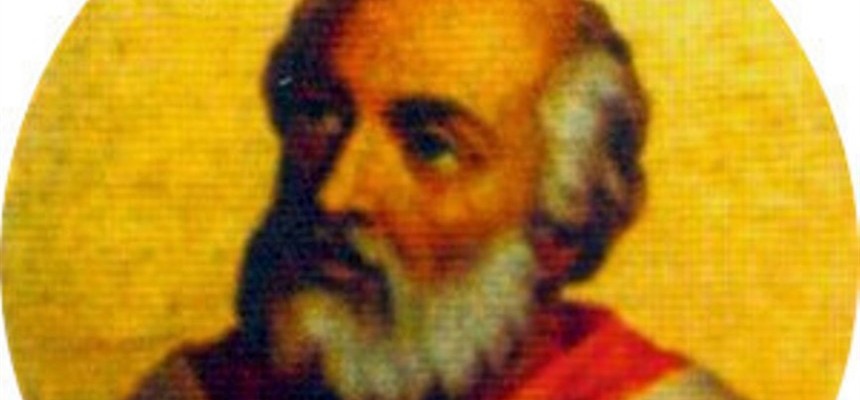
Benedict, son of Peter, was born in Rome, sometime between 790 and 810 AD. He was a well-educated man, known for his learning and piety. Before Pope Leo IV died, he had raised Benedict to the level of cardinal-priest, assigning him to the church of San Callisto.
On the death of Leo, 17 July 855, Adrian, a well-chosen candidate, was elected to the papacy. But he refused to take his place. Benedict, a popular man, was the second choice. He accepted. However, this was not as simple as it looked.
Arsenius was the bishop of Horta, 37 miles north of Rome. His son, or nephew, Anastasius, was an uncommonly well-educated man. He worked in both Latin and Greek and was a known entity. He had been a presbyter in Rome, who fled, for reasons we can only speculate, in 848. As a result, he was excommunicated by a Roman synod in 850. But he never returned to answer the charges and was anathematized and deposed by a second synod in 853. Arsenius did not accept this and this was his chance. He intercepted the papal legates on their way to inform the emperors of the new pope. He persuaded them to turn on Benedict and convince the emperors to name Anastasius the rightful pope. The legates returned to Rome with the imperial envoys and had Benedict’s election overturned and Anastasius installed. The new AntiPope moved into the Lateran Palace and Benedict was imprisoned.
Local popular opinion was well expressed and people prevailed upon the Frankish envoys until they recognized Benedict’s election. Benedict was finally named pope on 29 September 855. Two months had gone by without a pope. Anastasius was treated well and admitted to lay communion, where he worked, eventually as papal librarian.
This event further loosened the grip of the Frank royalty on papal succession.
When Emperor Lothair died, conflicts arose between the three sons, leading, directly or indirectly to the death of Charles, one of the sons. Due to these conflicts, the internal conflict within the kingdom was great and the Church was falling apart. Benedict wrote to the bishops rebuking them for being silent and condemned the inaction of the French hierarchy in not removing clerical abuses. In attempting to curb the licentiousness of the nobility, Benedict threatened to excommunicate Hubert, the brother of Queen Theutberga of Lorraine, for plundering monasteries; and insisted that Ingeltrude leave the court of Lothair ii of Lorraine and return to her husband, Count Boso.
Benedict protested against the English who had deposed their bishops without trial. At the same time, he welcomed Ethelwulf of Wessex and his son, the future Alfred the Great, to Rome. Probably in their honor, he restored the Schola Anglorum, destroyed by fire in 847 and never rebuilt.
He refused to sanction the deposition of Gregory, the Archbishop of Syracuse, by ignatius, the Patriarch of Constantinople, until he had examined the evidence. At the request of Hincmar of Reims, Benedict approved the acts of the Council of Soissons (853), which upheld Hincmar’s claim to the See of Reims, provided that the rights of the Holy See were preserved.
In the Middle Ages, a story cropped up of Pope Joan, supposedly Benedict’s immediate predecessor. Discovery of dated coins from both Pope Leo IV and Pope Benedict III show that there was no other pope between them.
Benedict died 17 April 858, after accomplishing quite a bit for two and a half years. He was buried near the principle gate of St. Peter’s Basilica.


Recent Comments